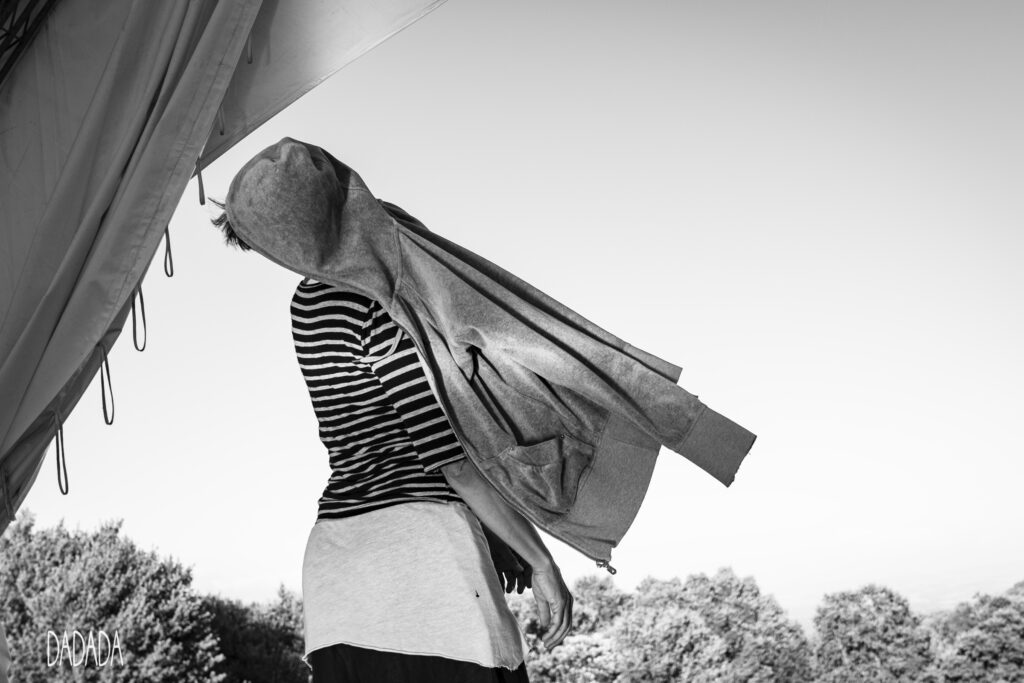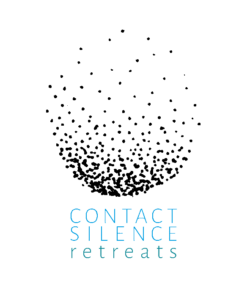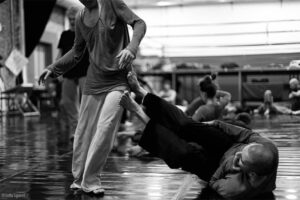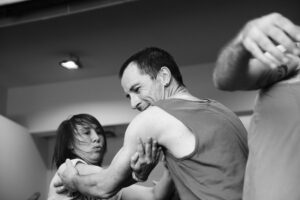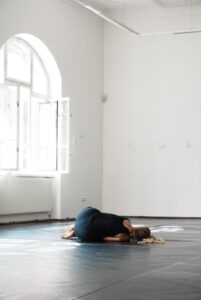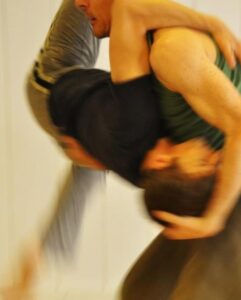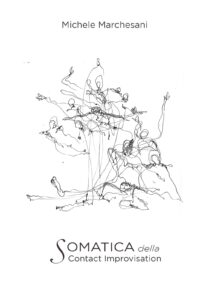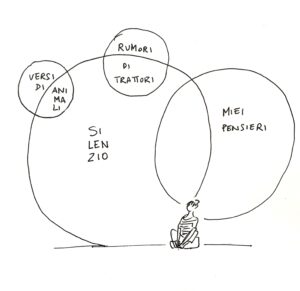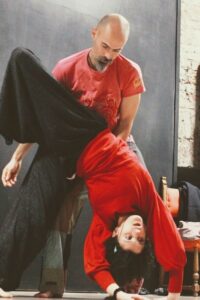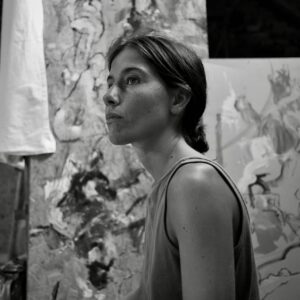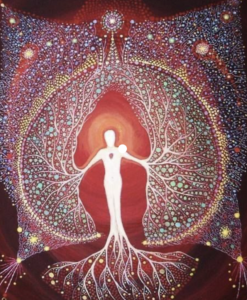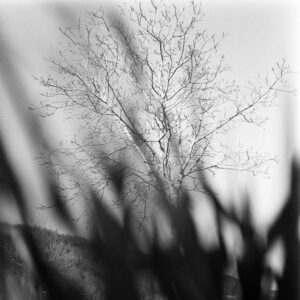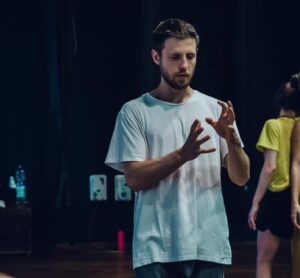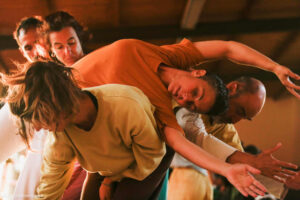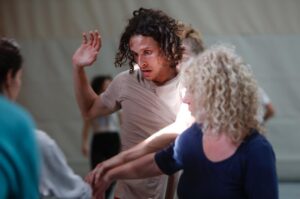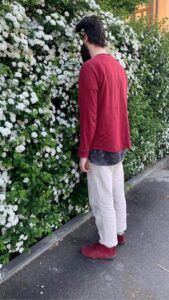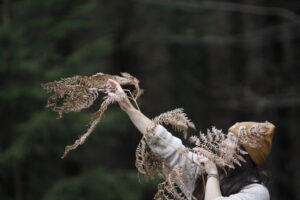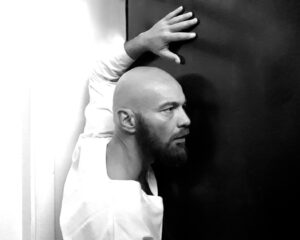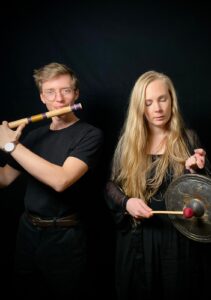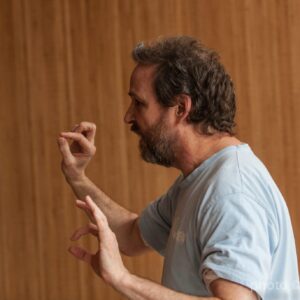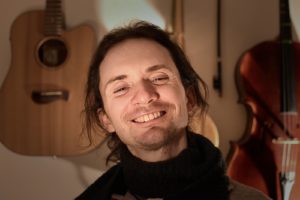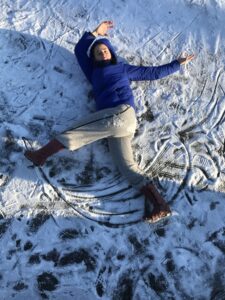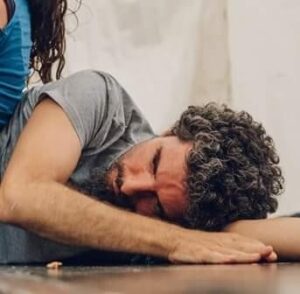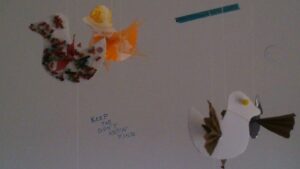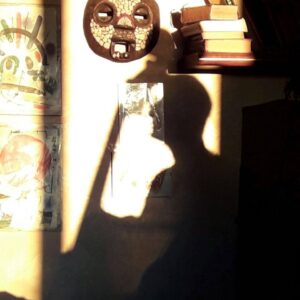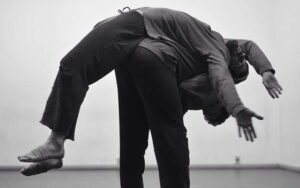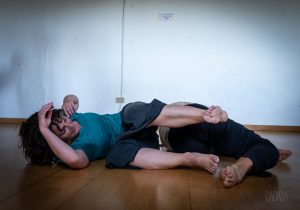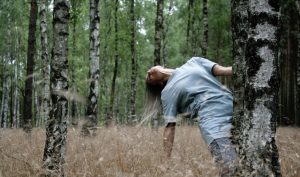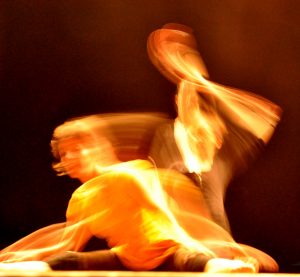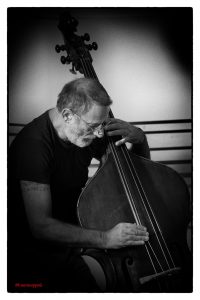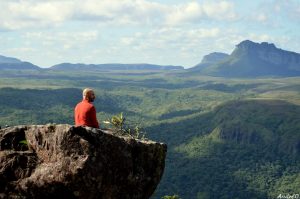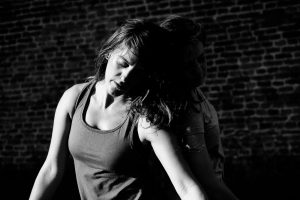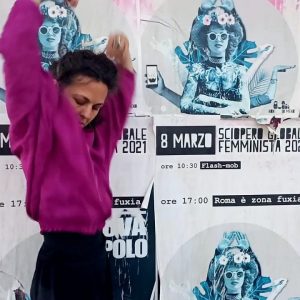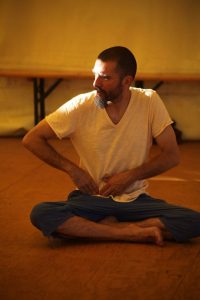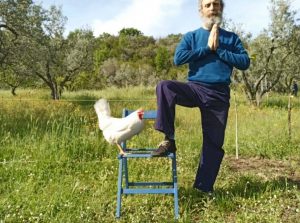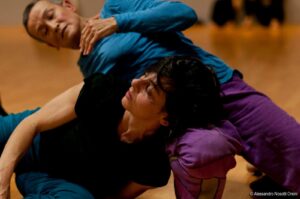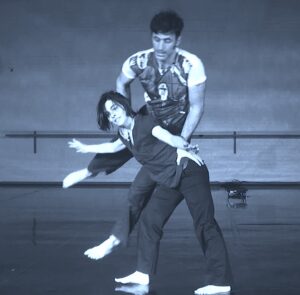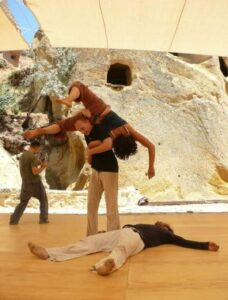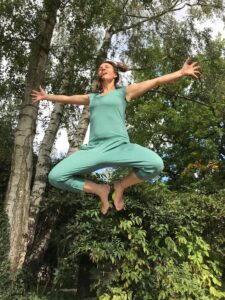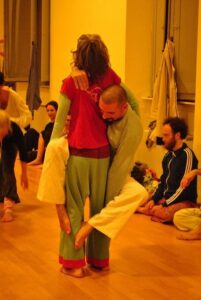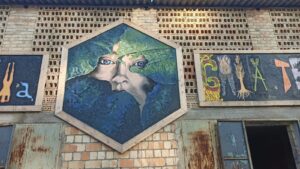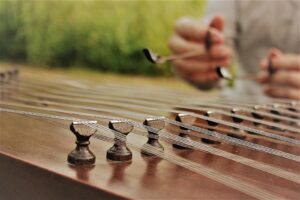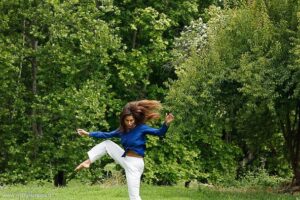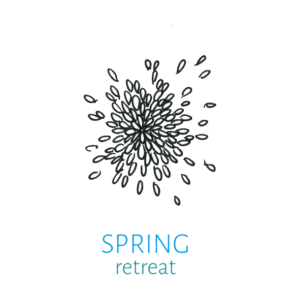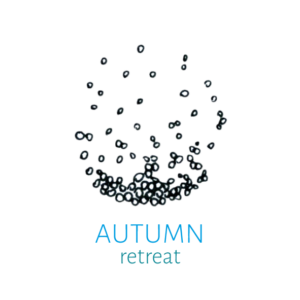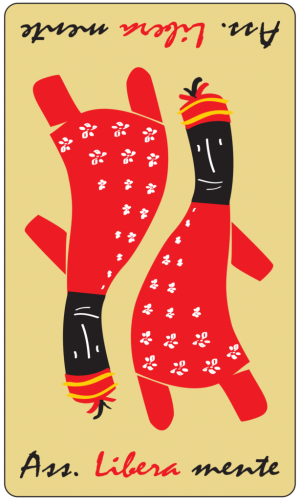Recently a girl at the end of one of my intensives asked me if she could interview me for the creation of a podcast.
Due to lack of time, we decided that she would ask me the first question and I would answer her with a voice message.
After a couple of days I get the question, the one I was most afraid of.
“What is Contact Improvisation for you?”
So this short article is the transcript of my voice message I sent her some time later.
I must admit that with this question, the first thought was ‘to be honest I am still finding out’.
So I’ll start from here.
I am almost 47 years old, I found CI at the age of 22 and my attitude is still one of study and research.
CI is a form, on the one hand very open and constantly nourished, and on the other hand it has received many different, and all correct, definitions.
Looking back on my journey I recognise different phases in which I could have defined CI in different ways.
But I’ll try to stay in the present.
I think the important thing is to define Contact as a physical and movement language that has a strong and definite impact on the whole system. Contact changes the way I perceive what is
happening around me.
When I say ‘around me’ I mean something physical that I am in contact with, but also something more subtle that impacts the choices I am going to make that will make up the dance in action.
So the touch (the famous point of contact) as a channel of mutual connection and choice between two human beings moving in dynamics, causing falls, taking advantage of momentum, and magically resolving potentiall error situations with one effective movement that generates
another.
The dancers find themselves in a flow of potential errors that they magically transform into a dance.
I often remind my students that CI is nothing more than a chained sequence of mistakes that become flow through the dancers’ choices.
If we try to simplify further, we can say that CI is the practice of falling together. This makes me think that in the common paradigm of dance, but of motor skills in general, falling is perceived as an error, the result of a wrong choice. Funny enough, in CI we train ourselves to cause falls, which become possibilities. In this sense I was saying earlier that CI changes the way we perceive.
The poetic side generated by error is the unknown space in which the dancer can improvise (and here we recognise the word “Improvisation”).
In my experience, when I had already been practising for several years and had skills that allowed me to stay in the risk, I experienced a different perception of time. Everything happened very quickly but my inner time dilated. I had plenty of time to collect details of what was happening. This is very powerful.
The possibility of being a dancer and at the same time a witness to what is happening.
It is also close to my heart to talk about the body-mind relationship in CI. All the complex skills I have described so far are possible through listening. The dancer listens to his partner with all the senses he has at his disposal and above all reads, understands the moving body, grasps directions, is able to quantify weight before supporting it, feels changes in tone, rhythm and speed. There is such richness in those brief moments of deep listening.
I think this is what makes me feel grateful to do what I do and what keeps me doing it.
I want to conclude by recalling an article that I find wonderful and that resonates so much in my present as a dancer, as a teacher and as a member of the CI community. The title is ‘The politics of mutuality’. It is a transcript of a dialogue between Steve Paxton and
Nancy Stark Smith that took place in 2016
Linda Bufali – July 2024
Recentemente, alla fine di uno dei miei intensivi, una ragazza mi ha chiesto se poteva intervistarmi per la creazione di un podcast. Per mancanza di tempo, abbiamo deciso che mi avrebbe fatto la prima domanda e io le avrei risposto con un messaggio vocale. Dopo un paio di giorni, ho ricevuto la domanda, quella che temevo di più. “Cosa significa per te la Contact Improvisation?”
Questo breve articolo è la trascrizione del mio messaggio vocale che le ho inviato qualche tempo dopo. Devo ammettere che, con questa domanda, il primo pensiero è stato ‘a dire il vero lo sto ancora scoprendo’. Quindi inizierò da qui.
Ho quasi 47 anni, ho trovato il CI all’età di 22 anni e il mio atteggiamento è ancora quello di studio e ricerca. Il CI è una forma, da un lato molto aperta e costantemente nutrita, e dall’altro ha ricevuto molte definizioni diverse, tutte corrette. Guardando indietro al mio percorso, riconosco diverse fasi in cui avrei potuto definire la CI in modi diversi. Ma cercherò di rimanere nel presente.
Penso che la cosa importante sia definire la Contact come un linguaggio fisico e di movimento che ha un impatto forte e definito sull’intero sistema. La Contact cambia il modo in cui percepisco ciò che accade intorno a me. Quando dico ‘intorno a me’ intendo qualcosa di fisico con cui sono in contatto, ma anche qualcosa di più sottile che impatta le scelte che sto per fare e che comporranno la danza in azione.
Quindi il tocco (il famoso punto di contatto) come canale di connessione e scelta reciproca tra due esseri umani in movimento, causando cadute, sfruttando lo slancio e risolvendo magicamente situazioni potenzialmente errate con un movimento efficace che ne genera un altro.
I danzatori si trovano in un flusso di potenziali errori che trasformano magicamente in danza. Ricordo spesso ai miei studenti che la CI non è altro che una sequenza concatenata di errori che diventano flusso attraverso le scelte dei danzatori. Se proviamo a semplificare ulteriormente, possiamo dire che la CI è la pratica del cadere insieme. Questo mi fa pensare che nel paradigma comune della danza, ma delle abilità motorie in generale, la caduta sia percepita come un errore, il risultato di una scelta sbagliata. È divertente notare come, nella CI, ci alleniamo a causare cadute, che diventano possibilità. In questo senso dicevo prima che la CI cambia il modo in cui percepiamo.
Il lato poetico generato dall’errore è lo spazio sconosciuto in cui il danzatore può improvvisare (e qui riconosciamo la parola “Improvisation”). Nella mia esperienza, quando praticavo già da diversi anni e avevo abilità che mi permettevano di rimanere nel rischio, ho sperimentato una percezione diversa del tempo. Tutto accadeva molto rapidamente ma il mio tempo interiore si dilatava. Avevo molto tempo per raccogliere dettagli di ciò che stava accadendo. Questo è molto potente. La possibilità di essere danzatore e allo stesso tempo testimone di ciò che sta accadendo.
Mi sta anche a cuore parlare della relazione corpo-mente nella CI. Tutte le complesse abilità che ho descritto finora sono possibili attraverso l’ascolto. Il danzatore ascolta il suo partner con tutti i sensi che ha a disposizione e soprattutto legge, comprende il corpo in movimento, ne coglie le direzioni, è in grado di quantificare il peso prima di sostenerlo, percepisce cambiamenti di tono, ritmo e velocità. C’è una tale ricchezza in quei brevi momenti di ascolto profondo. Penso che questo sia ciò che mi fa sentire grata di fare ciò che faccio e ciò che mi mantiene nel continuare a farlo.
Voglio concludere ricordando un articolo che trovo meraviglioso e che risuona molto nel mio presente come danzatrice, insegnante e membro della comunità CI. Il titolo è ‘The politics of mutuality’. È una trascrizione di un dialogo tra Steve Paxton e Nancy Stark Smith avvenuto nel 2016.
Linda Bufali – Luglio 2024
